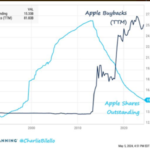The best time to invest in stocks is when blood is running on the street. Or to put it another way bear markets are great time to pick up quality names at cheap prices. While everything is falling day after day it takes courage to jump into the waters. While buying stocks when prices are low is a great strategy what about investing when prices are at their peaks. Putting cash into equity markets during peaks of bull markets is also not easy as there is always the fear of when stock would reverse course. Currently US equity markets are in a multi-year bull market. Many stocks at trading at their peaks and certain areas of the equity markets looks frothy. In the current market condition, companies with very low revenues and even tiny profits are worth billions. So does it make sense to buy stocks now?
According to an article by Scott Krauthamer at Alliance Bernstein, periodic investing at market peaks can also yield decent positive returns especially over the long run. From the piece:
High Valuations Don’t Always End in Disaster
For many investors, elevated valuations are an obstacle to deploying cash today—particularly in US stocks, which climbed to new record highs in early February. However, our research suggests that equities have delivered solid returns over time, even for investors who entered the market when stocks looked relatively expensive.
In fact, since 1950, the S&P 500 has been at or near record highs in 43% of all months (Display). And if you invested equal amounts at each market peak, US stocks would have delivered average annual returns of 9.6%. That’s 1.9% lower than the returns generated by investing at each bear market bottom, but a solid outcome over time, in our view.
High valuations don’t always end in disaster. But today’s valuations have been shaped by unusual market trends, adding concerns for investors. Rising price/earnings valuations of US stocks have been driven mostly by a surge in share prices, not by earnings growth. In other words, investors have pushed up share prices in anticipation that a global growth recovery will fuel a rebound in corporate earnings.
That’s a tall order. We believe earnings are unlikely to rise simultaneously across the market, given uncertainties about how countries will emerge from the pandemic, the pace of economic recovery and business challenges in many industries. So, investing in exchange- traded funds (ETFs) to gain passive, low-cost market exposure may not be the best way to redeploy cash to capture recovery potential.
Source: Cold Cash? How to Redeploy in Hot Markets, Alliance Bernstein
You may also the below related post:
Related ETF:
- SPDR S&P 500 ETF (SPY)
Disclosure: No positions




